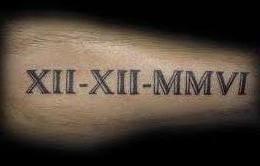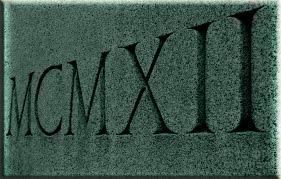Roman Numerals: What We Need to Know

Roman letters or the roman numerals date back to the 12th century. These were one of the oldest systems of scripts which were used by the people of Rome. These were used by the Etruscans during the Etruscans Civilization who form a part of the ancient civilization of Italy. These people used a script mainly of some symbols like I, Λ, X, ⋔, 8, ⊕, for I, V, X, L, C, and M to denote the numerals. These people were using these scripts for a long time which now forms a part of the Roman numerals. These Roman numerals are now also used in many places. The origin of the Roman or the ancient Rome numerals are still not clear. But one of the hypotheses of the ancient Rome script how it came into existence is the Tally Sticks system. This system was continued by the Dalmatian shepherds even in the 19th century. Alfred Hooper has an alternate hypothesis stating that it has been formed by hand signal systems. He put forward his own argument in many ways. There is also a belief that the Etruscans have adapted or followed the Greek civilizations script.
The roman numerals which are still used in many places, especially for headings and subheadings were used extensively. These Roman numerals have been transformed over time from majorly symbols to alphabets. Previously the Roman numerals had symbols in the place of the recent alphabets which are used to denote numbers. Later with the time the symbols also transformed into alphabets. There are only 7 symbols or alphabets which are used to denote the Roman numerals. The roman numerals are very much easy to follow when understood. Initially for any one they would find it hard to follow but when understood it is so simple as the regular numerals. Most of the earlier clocks used to have their numbers in Roman numerals only.
The roman numerals follow a pattern of writing the numbers. The pattern uses two principles they are the additive and the subtractive principles. Roman numeral does not have the concept of zero. They do not have any specific value or determiner for zero. The zero was sometimes used as N. N denotes the first letter of Nullah which means empty.
Although it was not prominent throughout all the users of roman numerals some used this pattern. But in general only the additive and subtractive pattern without zero was used in the Roman Numerals.
The following are the symbols with their values
I 1
V 5
X 10
L 50
C 100
M 1000
With these symbols the entire roman numerals are written either with additive principle or with subtractive principle.
Formation of Roman numerals with additive principles
The roman numerals which are denoted only with 7 symbols or alphabets are written with additive and also with subtractive principle. The additive principle works in such a way that when 3 has to be written in roman numeral there is no particular symbol for that instead it could be written as III which means 3 ones. The addition of all the three ones gives the value 3.
Likewise for 6 it should be written as VI which means V-5 plus I-1 results 6. Since there is no zero in this 106 could be mentioned as CVI which means C=100 + V=5 + I=1 results 106. Completely all the numbers would be followed and framed in such additive principle only.
Formation of Roman numerals with subtractive principles
The roman numerals sometimes would follow the principle of subtraction. When 4 is to be denoted it is not denoted as IIII but as IV which means 1 less than V=5. Also in 9 it is mentioned as IX which means 1 less than 10. 900 would be written as CM meaning C=100; M=1000 100 less than 1000. In such a way to get the numbers the Roman letters are used.
In such manner for 1904 it could be written as MCMIV means M for 1000 CM for 900 IV in 4 where 0 does not have any value or symbol. The addition of all the digits gives the answer 1904.
Although this is the basic principles there are few exceptions where these principles were not followed. An inspiration on one of the monuments in London on one arch is done in the Roman numeral. The year 1910 is marked in the Roman numeral by DCCCC instead MCMX which follows the additive principle. Also these roman numerals could be written in small letters like I , v, x, c, m also j is used sometimes with this at the end of the number to denote ones. But these are exceptions only. Where we do not have any proper proof of all these small letters, these are followed in the recent days and also have been followed in the medieval period.

These Roman numerals are used in many places nowadays. Even though they are not completely used they are used in the headings. Also in some clocks we do see the roman numerals mentioned for the time. In some old buildings where the antique clocks are there these numerals are used. Also, when denoting the names of monarchs and popes the roman numerals are used for example Alexander II. The roman numerals are used in many hierarchs to denote first, second or third we use the roman numerals only. Sometimes the year of construction of the building which is inscribed in the cornerstone would be mentioned using the Roman numeral.
Some other examples where the Roman Numerals are used:-
• Book chapter numbers in the index would be denoted.
• Also when some grand events are there it would also be denoted.
• In chemistry, these are used in the periodic table.
• In music, the diatonic functions.
• In tarots also these are used to denote the cards of Major Arcana.
• In wall clocks or time pieces
• In astronomy these are used to denote the names and position of the planets.
Likewise there are so many uses of Roman numerals in the recent days also.



